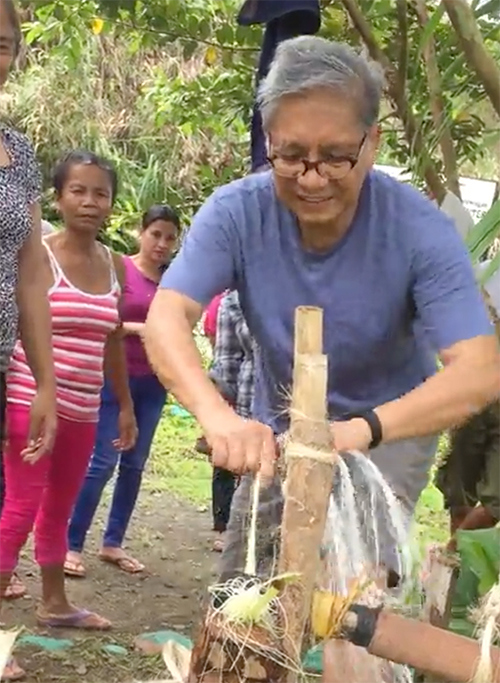Michael Gonzalez - The Integrity and Integrality of Indigenous Weaving
“The Fulbright research experience re-connected and re-directed my research, outside the classroom, to essential questions of how culture and development in societies with history like the Philippines is articulated in the work that people do, in this case, with indigenous weaving. Much work is needed in discovering its ontology and frame it within the discipline of anthropology. Working with local NGOs, I was able to develop a network of producers and weavers throughout the main weaving centers of the Philippines—Ilokos, Visayas, and Mindanao, even though the latter was off limits to Fulbright, but I communicated with people in the area for information.”
Upon his return to the U.S., Michael gave lectures and presentations about his research at conferences and with cultural organizations at De Young Museum, UC Berkeley, Stanford University, and Filipino communities in the San Francisco Bay Area and New York. He was also invited by the International Institute of Education (IIE) in San Francisco to sit on a resource panel for in-coming Fulbright Fellows and he is applying for a similar grant to do more in-depth research on the socio-cognitive aspects of handloom weaving and its cultural system along the theory of textile thinking (re: design thinking) as applied to weaving practices. Resultant of this work, Michael helped to found the San Francisco-based The Hinabi Project that promotes public awareness in the San Francisco Bay Area about Philippine indigenous textile arts and weaving communities and he serves as its Research/Education Director.
As he writes in his A Fulbright Journal 2017 blog entry, “Maghahabi: A Theory Of Culture”: “The forming of cloth, whatever fiber material, can only happen by interlacing two strands of fiber at right angles. In weaving parlance, these are warp (vertical) and the weft (horizontal) thread. In weaving cultures they represent social and physical properties, typically, the male and the female, or heaven and earth. Their intersection constructs the wholeness of the world from which unity emerges-–the axis mundi. In her analysis of designs from Mindanao weavers, Dr. Patricia Araneta explains this concept of axis mundi as the point that where the intersection meets, establishes the location of harmony, and of course, unity. In the performance of Kalinga music, the musicians aim for a good, beautiful performance. They call a unified and “harmonious” sound as talimbat, or the interlocking of sounds made by each player, one after the other (five players at least). Only then does the music become mamburo—beautiful. Indeed, the antiphonal and polychordal outcome can be expressed as woven sound.”
A renaissance man, Michael also enjoys travel and is an aficionado of the classic and electric guitar. A son of the renowned writer N.V.M. Gonzalez, National Artist of the Philippines in Literature (1997), he founded the N.V.M. & Narita Gonzalez Writers’ Workshop in 2005, which has conducted writing workshops on campuses throughout California as well as in the Philippines with the goal of fostering literary exchanges between global Filipinos.
Learn more about The Hinabi Project: https://thehinabiproject.org/styled-13/styled-8/ and the N.V.M. & Narita Gonzalez Writers’ Workshop: http://www.nvmgonzalez.org/styled/. Dr. Micheal Gonzalez learning how to extract abaca fiber for weaving.

